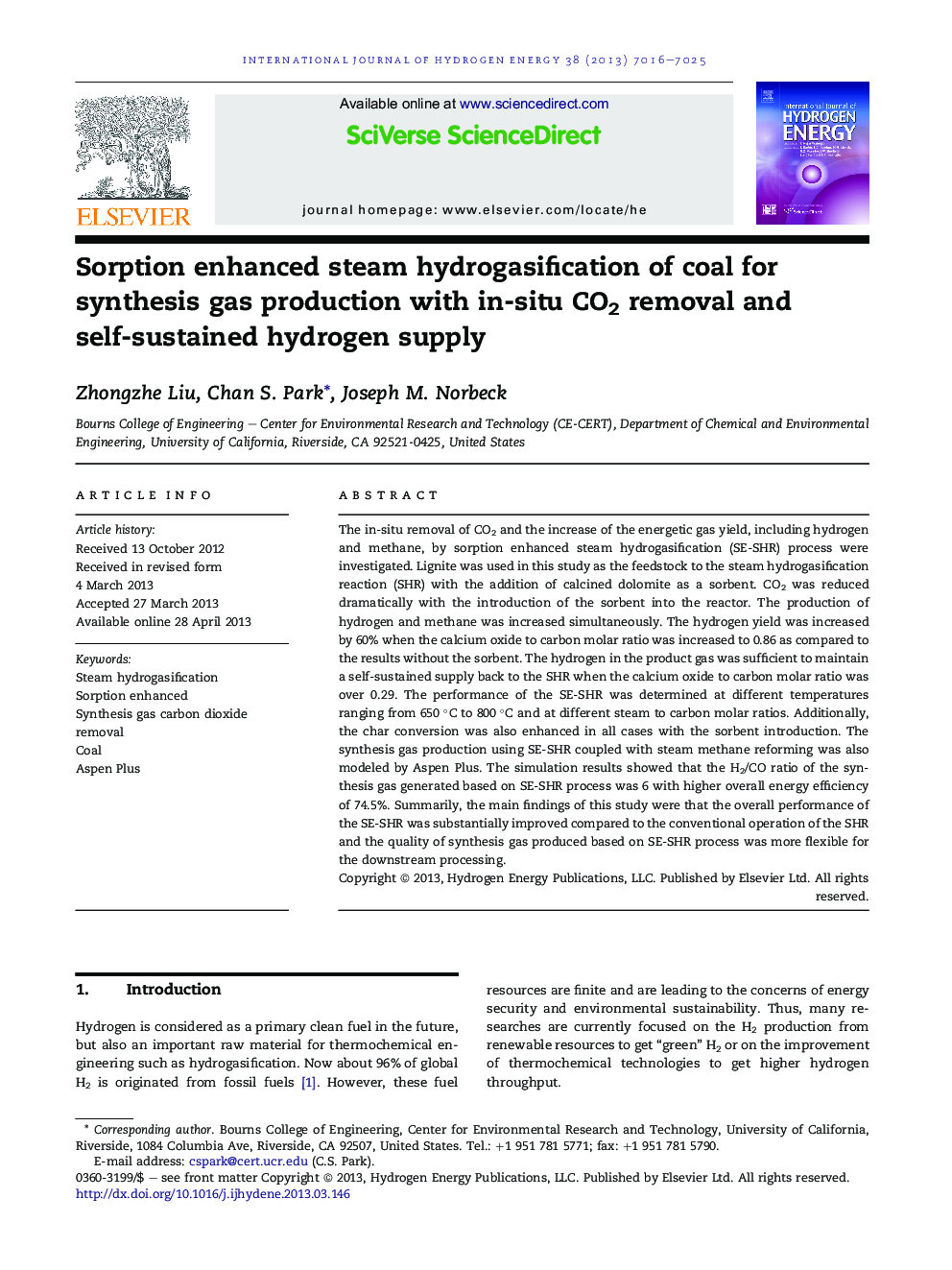| Article ID | Journal | Published Year | Pages | File Type |
|---|---|---|---|---|
| 1277485 | International Journal of Hydrogen Energy | 2013 | 10 Pages |
•Sorbent addition could enhance the CO2 removal and the energetic gas production.•The H2 yield was enough for recycle use over the CaO/C molar ratio of 0.29.•Higher temperature favored higher energetic gas yield.•Steam played a crucial role in improving the energetic gas yield.•Synthesis gas quality could be improved using sorption enhanced steam hydrogasification product gas.
The in-situ removal of CO2 and the increase of the energetic gas yield, including hydrogen and methane, by sorption enhanced steam hydrogasification (SE-SHR) process were investigated. Lignite was used in this study as the feedstock to the steam hydrogasification reaction (SHR) with the addition of calcined dolomite as a sorbent. CO2 was reduced dramatically with the introduction of the sorbent into the reactor. The production of hydrogen and methane was increased simultaneously. The hydrogen yield was increased by 60% when the calcium oxide to carbon molar ratio was increased to 0.86 as compared to the results without the sorbent. The hydrogen in the product gas was sufficient to maintain a self-sustained supply back to the SHR when the calcium oxide to carbon molar ratio was over 0.29. The performance of the SE-SHR was determined at different temperatures ranging from 650 °C to 800 °C and at different steam to carbon molar ratios. Additionally, the char conversion was also enhanced in all cases with the sorbent introduction. The synthesis gas production using SE-SHR coupled with steam methane reforming was also modeled by Aspen Plus. The simulation results showed that the H2/CO ratio of the synthesis gas generated based on SE-SHR process was 6 with higher overall energy efficiency of 74.5%. Summarily, the main findings of this study were that the overall performance of the SE-SHR was substantially improved compared to the conventional operation of the SHR and the quality of synthesis gas produced based on SE-SHR process was more flexible for the downstream processing.
